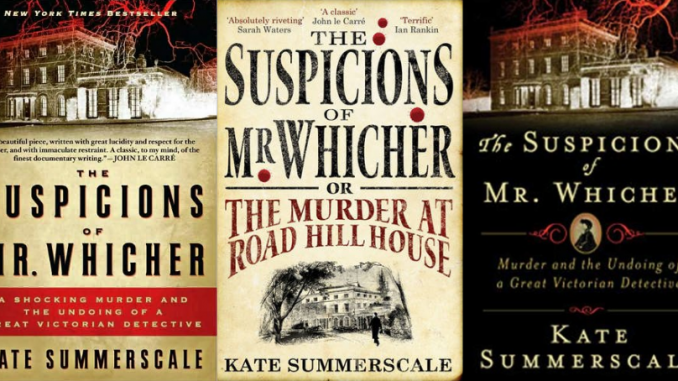
Praise:
“Nothing less than a masterpiece…” – Mail on Sunday
“A classic to my mind, of the finest documentary writing.” – John Le Carré
“Terrific!” – Ian Rankin
Awards:
The Galaxy Book of the Year
Brish Book Awards 2009
New York Times Best Seller
Shortlisted for the Crime Writers’ Association Gold Dagger.
Rohan Roberts | 1 July 2014
My bookshelf is stacked with crime fiction and detective novels. My DVD collection is filled with murder mysteries and whodunnits. But The Suspicions of Mr Whicher by Kate Summerscale raises itself above all the others and begs to be announced as the most spellbinding, suspenseful, and unputdownable of them all. My heart raced, my pulse pounded, and every neuron in my brain was on fire trying to figure out who, why, and how.
The novel is based on true events that took place in Victorian England in the summer of 1860. The crime is as straightforward as can be: The Kent family live in an elegant house in Wiltshire. They wake up one morning to find the three-year-old son is missing. He had been asleep in his crib, with the Nanny in the same room. Come daybreak, the sheets are made, the blankets are tucked, but the toddler has vanished. Soon, his dead body is discovered covered in faeces, dumped in the outdoor toilet, with the throat slit from ear to ear, and a deep stab to the heart. What’s worse, the house is bolted from the inside which would indicate that the horrifying murder has been committed by one of the household members.
In its day, the murder caused a national outcry and received blanket coverage in the Victorian press – with the Government Home Office instructing Scotland Yard to dispatch their best detective to solve the case. The case also inspired both Charles Dickens and Wilkie Collins to write sensationalist mysteries revolving around the secretive lives of middle class Victorian families, where everything seems fine on the surface, but dark conspiracies and vengeful emotions lurk beneath.
What is particularly gripping about the novel is the psychology of the suspects. Is it the father who had four of his infants die from a previous marriage? Is it the uncaring step-mother? Is it the resentful, rebellious stepchildren? Is it the scheming servants? Could it be the mysterious Nanny? The entire house is steeped in secrets and everyone is a suspect.
The book belongs to the documentary non-fiction genre and is meticulously researched. Craig Brown, writing in the Mail on Sunday says, “ The novel is at one and the same time a crime thriller, a sociological history, a biography, and a fascination essay on the nature of investigation.” Ian Rankin points out that what this novel does particularly well is that it look at notions of class, criminality, human nature and religion.
What I particularly rate about the novel are the tidbits of information about the history of detective investigation, the formation of the Scotland Yard, the insight the novel offers into Victorian life, and the etymological roots of words connected with the field of detection. For instance, I discovered that the word “clue” derives from “clew” meaning a ball of thread. It has associations with the ball of yarn given by Ariadne to Theseus that he uses to escape from the Minotaur’s labyrinth. (This is why we refer to a plot of a story as a “knot” and still use the expression, “to unravel the clues” and have a “denouement” at the end – an unknotting).
Last word: This is a deeply satisfying book, eminently readable, fast-paced, informative, and an absolute thriller.